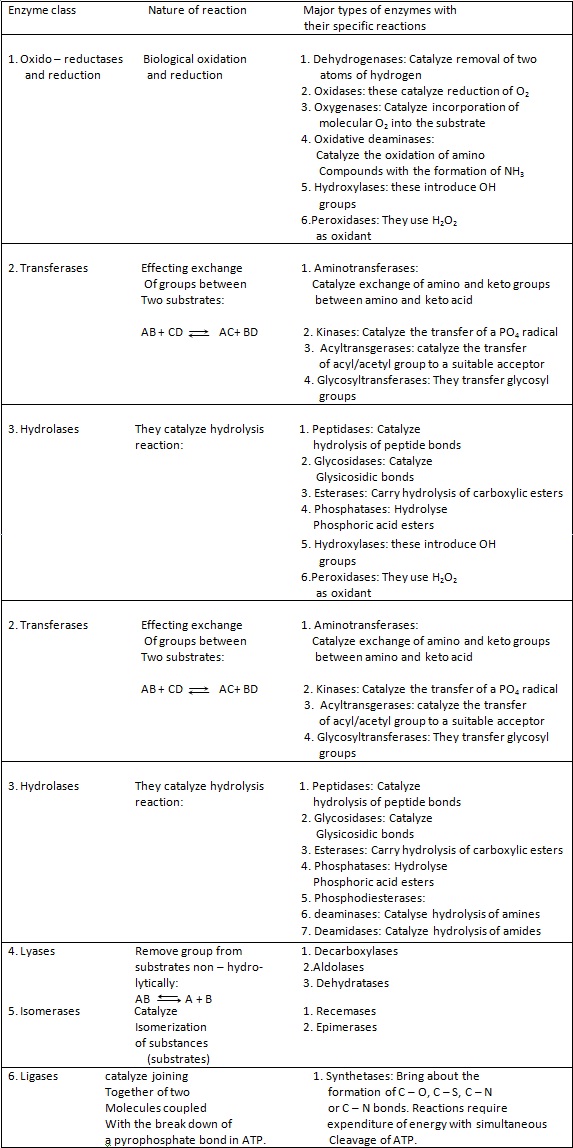Nomenclature And Classification
Nomenclature And Classification Assignment Help | Nomenclature And Classification Homework Help
Nomenclature and classification
For a long time the normal practice has been to name an enzyme on the basis of the nature of reaction and the specific substrate involved, e.g., maltase is an enzyme which hydrolyzes maltose. Similarly, glutamate dehydrogenase is an enzyme which indicates which indicates removal of hydrogen from glutamic acid. This refers to an oxidation reaction. Certain enzymes have been known for a long time for their common usage, such as pepsin, trypin, ptyalin,.etc. These trivial names are still retained.
In 1972, the international Union of Biochemistry adopted a unique nomenclature, which not only retained trivial names of many enzymes wherever possible, but also recommended systematic names. The IUB has recognized six major classes of enzymes on the basis of reaction catalyzed by them. Each is further subdivided into sub-class, sub-sub-class and then the individual enzymes within a sub-sub-group. Thus each enzyme is designated by four numbers. Lactate dehydrogenase is an oxidoreductase which is written as EC 1.1.1.27 according to systematic nomenclature, along with its trivial name.
Classes of Enzymes
1. Oxidoreductases This class of enzymes is concerned with oxidation-reduction reaction in which one compound is oxidized and another reduced. Oxidation involves removal of hydrogen atom or an electron from a donor to a common acceptor. Such enzymes are known as dehydrogenases. Oxidases of this class involve molecular oxygen as one of the reactants.
2. Transferases These are enzymes which catalyze the transfer of chemical groups, such as alkyl, methyl, aminoacyl, sulphate, aldehyde, ketone, glycosyl, phosphate groups, etc., from a donor to an acceptor.
3. Hydrolases these included hydrolytic enzymes that split C–O , C–N, C–C, and other bonds by addition of water. These included esterases, lipases, glycosidases, peptidases, phosphatases, etc.
4. Lyases These are a group of enzymes which catalyze the removal of specific groups from their substrates and introduce double bonds. Important example are aldolases, decarboxylases, dehydratases, aconitases, etc.
5. Isomerases Isomerases are a group of enzymes which catalyze redistribution of chemical group within a molecule and produce isomers, epimers etc. Important examples are isomerases, epimerases, recemases and intramolecular transferases.
6. Ligases These are also called synthetases and catalyze the joining together of two molecular coupled with the break down of phosphate bonds in ATP or any nucleoside triphosphates. Examples included synthetases,

For more help in Nomenclature and classification please click the button below to submit your homework assignment